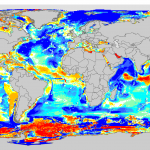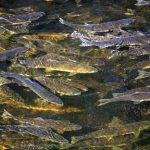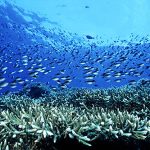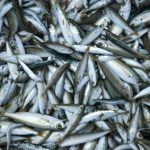Climate change
- Develop analytical tools to assess the impacts of climate and ocean changes on marine biota and fisheries (e.g., Cheung et al. 2008, 2011).
- Development of the Dynamic Bioclimate Envelope Model (DBEM) to predict species distributions;
- The current version of DBEM explicitly accounts for eco-physiology, population dynamics, dispersal and habitat suitability;
- An upcoming version of DBEM will also account for trophic-interactions.
- Develop global and regional scenarios of climate change impacts on marine biota (e.g., Cheung et al. 2009, 2010, 2012a). Our works project that:
- the majority of exploited marine fishes and invertebrates in the world are expected to shift their distribution centroid poleward and to deeper water by 2050 relative to now, under a range of greenhouse gas emission scenarios;
- the rate of local extinction driven by warming is expected to be highest along the tropics and in semi-enclosed seas while rate of invasion is highest in high-latitude regions;
- marine communities are expected to be “tropicalized”.
- Effects of climate change on marine fisheries (e.g., Cheung et al. 2010, 2012b, Sumaila et al. 2011, Lam et al. 2012).
- Maximum fisheries catch potential is expected to decrease substantially (>30%) in the tropics and increase in some high latitude regions.
Conservation of marine fishes
- Vulnerability of marine biota to fishing (e.g., Cheung et al. 2005, 2007).
- An index of intrinsic vulnerability of marine fishes to fishing (now available as a standard information for most marine fishes in FishBase)
- Conservation and management of threatened marine fishes (e.g., Sadovy & Cheung 2003, Sadovy et al. 2012).
- e.g., Chinese bahaba (Bahaba taipingensis), humphead wrasse (Cheilinus undulatus) and Nassau grouper (Epinephelus striatus).
Trade-offs in ecosystem-based fisheries management
- Assessing the benefits and costs of marine protected areas (e.g., Sumaila et al. 2008).
- Trade-offs in managing ecosystem services in China and Kenya (e.g., Cheung & Sumaila 2007, ESPA funded project).
Chinese fisheries
- Reconstruction of historical changes in Hong Kong marine ecosystems and fisheries (Cheung & Sadovy 2004).
- Status of fisheries resources in South China Sea (Cheung & Pitcher 2008).
- Modelling of East China Sea marine ecosystem (Cheng et al. 2009).



